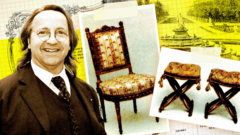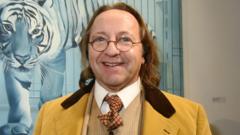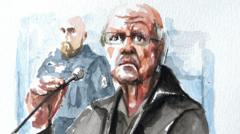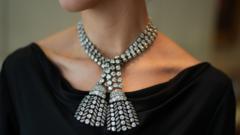Two men leveraged their expertise to create and sell fraudulent luxury chairs purporting to be royal antiques, deceiving institutions like the Palace of Versailles and raking in millions before being caught in a sweeping investigation.
Versailles Furniture Fraud: From Royal Treasures to Counterfeit Chaos

Versailles Furniture Fraud: From Royal Treasures to Counterfeit Chaos
A scandal involving fake 18th-century furniture has rocked the French antiques market, revealing a web of deceit involving respected experts and art dealers.
In a remarkable case of deception that shook the French antiques community, two artisans managed to produce and sell counterfeit royal furniture purportedly linked to the storied Palace of Versailles. During the early 2010s, a set of lavish chairs, allegedly once gracing the grounds of Versailles and connected to Marie Antoinette, surfaced in the French antiques market. Stamped with the hallmark of renowned cabinetmaker Nicolas-Quinibert Foliot from the 1700s, these chairs were deemed "national treasures" by the French government at Versailles’ urging.
Initially, the palace sought to acquire the chairs but balked at the steep price tag, ultimately resulting in a purchase by Qatari Prince Mohammed bin Hamad Al Thani for an astonishing €2 million (£1.67 million). This incident was just a highlight in a series of high-value 18th-century furniture sales over recent years, which included purportedly royal chairs owned by various historical figures, including King Louis XV's mistress and Louis XVI's sister.
However, the excitement soon turned to scandal when it was uncovered that these sought-after antiques were all sophisticated forgeries. This revelation led to an extensive investigation culminating in a high-profile trial involving prominent antiques expert Georges "Bill" Pallot and renowned cabinetmaker Bruno Desnoues. Both men faced serious charges, including fraud and money laundering, a conclusion drawn after a nine-year probe into their activities.
Pallot, whose academic prowess made him a trusted authority on antiques, described how the forgery scheme began as a lighthearted challenge to replicate legitimate furniture. What started as a "joke" spiraled into significant illicit profits as they fabricated chairs, sold them to art dealers, and watched as they were auctioned for substantial sums at reputable auction houses like Sotheby's.
Through shrewd deception, Pallot and Desnoues reportedly pocketed millions, with accusations from prosecutors suggesting profits upwards of €3 million, although the pair claimed their earnings were substantially lower. Their covert operation went unnoticed until investigators traced their extravagant lifestyle back to their fraudulent dealings, igniting a broader inquiry into the art market's regulation and the standards adhered to by dealers.
As the trial unfolds, it reveals deeper implications for the antiques sector, spotlighting the vulnerabilities that allow such fraud to flourish. While Pallot and Desnoues have admitted their misdeeds, the case has also ensnared gallery director Laurent Kraemer, who has been accused of selling the counterfeit chairs through negligence.
Kraemer and his gallery are fighting against claims that they failed to authenticate the furniture before selling, arguing they too were victims of the deception. The legal proceedings, set to reinstate trust in the art world, underscore a pressing need for better oversight and diligence in verifying the authenticity of heritage memorabilia.



















